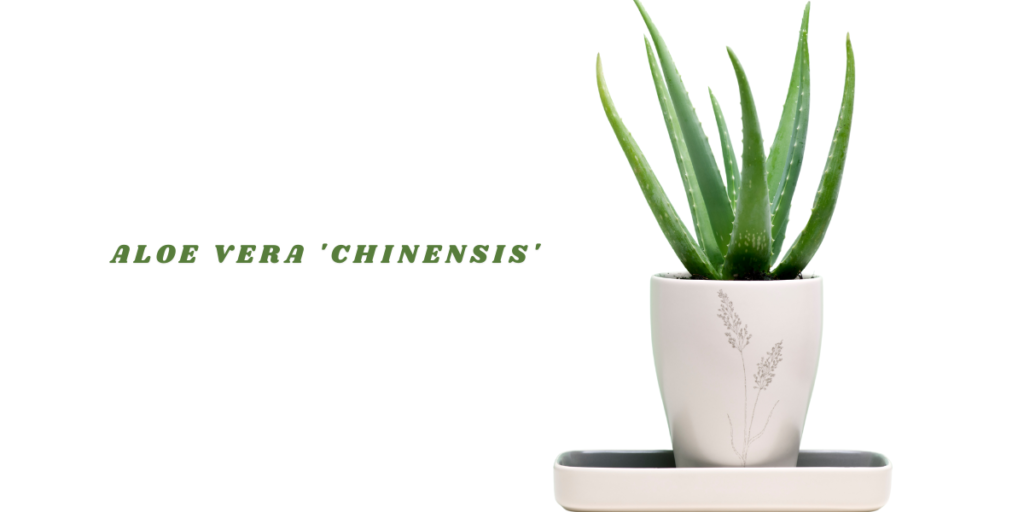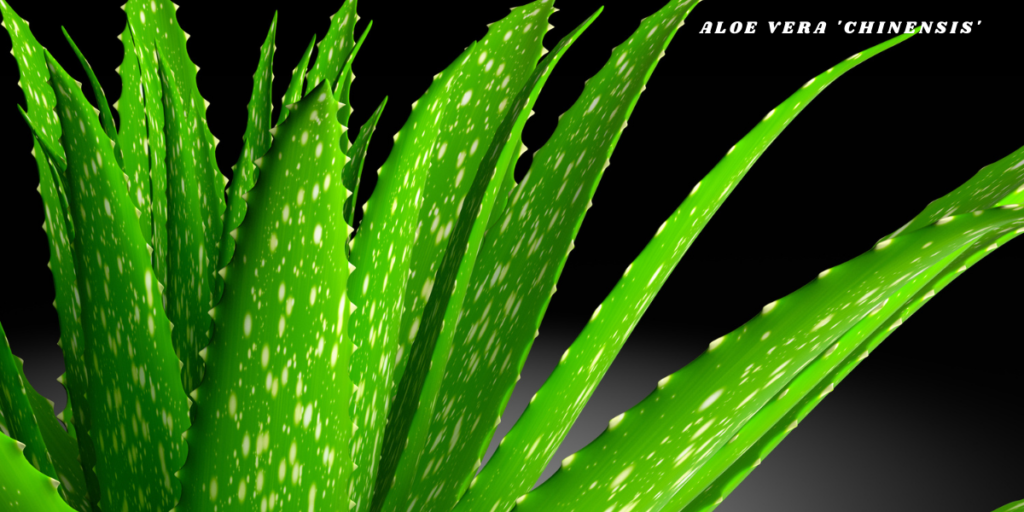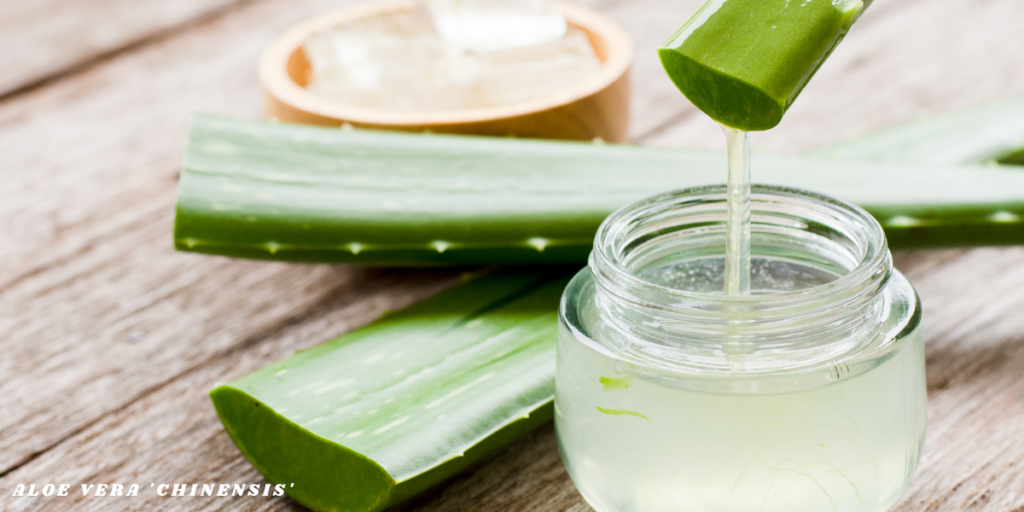Aloe vera ‘Chinensis’ Guide: Care, Benefits, and Growing Tips
Aloe vera ‘Chinensis’, commonly known as the Chinese Aloe, is a captivating succulent plant that boasts not only aesthetic appeal but also a range of medicinal benefits. This hardy variety of Aloe Vera is recognized for its resilience and unique leaf structure, making it a popular choice among plant enthusiasts and home gardeners alike. Whether you’re drawn to its striking appearance or its therapeutic properties, ‘Chinensis’ is a delightful addition to any collection.
Overview and Key Features of Aloe vera ‘Chinensis’

Aloe vera ‘Chinensis’ is a sub-species of the widely acclaimed Aloe vera and is native to China and other regions in Asia. It shares many characteristics with its more common counterpart but also has distinct features that set it apart.
Key Features:
- Leaf Structure:
- The leaves of Aloe vera ‘Chinensis’ are thicker and more elongated compared to other Aloe varieties. They can reach lengths of up to 12 inches and are typically green with a slight bluish tint. The leaf margins are serrated and often have small, white teeth that add to their visual appeal.
- Gel Quality:
- The gel contained within the leaves is similar to that of other Aloe varieties, known for its soothing and hydrating properties. It is often used in traditional medicine and skincare, thanks to its high content of vitamins, minerals, and antioxidants.
- Growth Habit:
- This Aloe variety grows in a rosette formation and can produce offsets (pups) that allow for easy propagation. It is generally smaller than some other Aloe varieties, making it an excellent choice for indoor gardening or small spaces.
Natural Habitat and Origins of Aloe vera ‘Chinensis’
Aloe vera ‘Chinensis’ thrives in warm, arid climates and is well adapted to rocky, sandy soils. Its natural habitat extends across various regions in China, where it grows in dry, sun-drenched environments.
Adaptations:
- Water Storage:
- Like other Aloe species, ‘Chinensis’ has adapted to conserve water through its succulent leaves. This allows it to endure long periods of drought, making it a low-maintenance choice for home gardeners.
- Sunlight Tolerance:
- This variety has evolved to thrive in bright sunlight, making it ideal for outdoor gardens or sunny windowsills.
Ideal Growing Conditions
To successfully cultivate Aloe vera ‘Chinensis’, it’s essential to provide the right conditions that mimic its natural environment.
Light Requirements:
- Bright Direct Light:
- Aloe vera ‘Chinensis’ flourishes in bright, direct sunlight for several hours a day. A south-facing window is typically the best location. Insufficient light may cause the plant to stretch towards the light source, resulting in elongated, leggy growth.
- Adaptability:
- While it prefers full sun, ‘Chinensis’ can tolerate partial shade. However, reduced light can slow growth and affect the vibrancy of its foliage.
Watering:
- Infrequent Watering:
- Watering should be done sparingly. Allow the top 1-2 inches of soil to dry out completely before re-watering, which usually amounts to watering every 2-3 weeks during the growing season.
- Drainage:
- To avoid root rot, use a cactus or succulent soil mix that drains well. If you’re using regular potting soil, enrich it with sand or perlite to enhance drainage.
Temperature and Humidity:
- Temperature Range:
- Aloe vera ‘Chinensis’ thrives in temperatures ranging from 60°F to 80°F (15°C to 27°C). It can withstand higher temperatures but should be protected from frost, as temperatures below 50°F (10°C) can be harmful.
- Low Humidity:
- This Aloe variety prefers low to moderate humidity levels. High humidity can lead to fungal problems, so ensure good air circulation around the plant.

Common Issues and Solutions for Aloe vera ‘Chinensis’
Despite its hardy nature, ‘Chinensis’ can encounter a few challenges. Here are common problems and their solutions.
Overwatering:
- Symptoms:
- Yellowing leaves and a mushy base are signs of overwatering. The roots may begin to rot, which can be fatal to the plant.
- Solution:
- Cease watering and let the soil dry out thoroughly. If root rot is suspected, gently remove the plant from its pot, trim away any rotten roots, and repot it in fresh, dry soil.
Underwatering:
- Symptoms:
- Brown, dry leaf tips and wilting indicate underwatering. The leaves may also begin to wrinkle as the plant uses its stored moisture.
- Solution:
- Increase watering frequency, ensuring that you provide enough water to thoroughly moisten the soil. Adjust your watering schedule according to environmental conditions, particularly in the warmer months.
Pests:
- Common Pests:
- Aloe vera ‘Chinensis’ can be affected by mealybugs, aphids, and spider mites. These pests can put strain on the plant, resulting in reduced growth.
- Solution:
- Consistently check your plant for any indications of pests. If an infestation occurs, treat it with insecticidal soap or neem oil, ensuring to coat the undersides of the leaves.
Propagation Methods for Aloe vera ‘Chinensis’
Aloe vera ‘Chinensis’ can be propagated easily, making it a great choice for expanding your plant collection.
Offsets (Pups):
- Remove the Plant:
- Carefully take the Aloe out of its pot, being gentle with the roots.
- Identify Offsets:
- Look for small pups growing around the base of the parent plant. These should have their own roots.
- Separate and Re-Pot:
- Use a clean knife to gently separate the pups from the main plant. Re-pot each offset into its own container filled with well-draining potting mix.
Leaf Cuttings (Less Common):
- Select Healthy Leaves:
- Choose healthy, mature leaves from the plant.
- Cut into Sections:
- Cut the leaves into sections of about 6 inches long, ensuring that the cut end remains intact.
- Allow to Callus:
- Place the cuttings in a dry, warm area for several days to allow the cut ends to callus.
- Planting:
- Once calloused, plant the cut ends in well-draining soil. Lightly water to encourage rooting, although this method is less reliable than using offsets.
Uses of Aloe vera ‘Chinensis’
Aloe vera ‘Chinensis’ is valued not only for its ornamental qualities but also for its myriad of uses:
Medicinal Uses:
- Skin Care:
- The gel derived from the leaves is famous for its ability to soothe sunburns, cuts, and abrasions. Its anti-inflammatory properties promote healing and reduce pain.
- Moisturizing Agent:
- Aloe vera gel serves as an effective natural moisturizer. It moisturizes the skin without leaving a greasy residue, making it suitable for a variety of skin types.
- Digestive Aid:
- The juice of Aloe vera ‘Chinensis’ is sometimes consumed for its potential digestive benefits, promoting gut health and regularity when taken in moderation.

Culinary Uses:
- Beverages:
- The juice is also used in smoothies and health drinks for its refreshing taste and nutritional benefits. Always use food-grade Aloe Vera products for consumption.
- Culinary Ingredient:
- In some cultures, Aloe vera gel is incorporated into salads and desserts due to its mild flavor and health benefits.
Pet Safety and Toxicity Concerns
While ‘Chinensis’ offers many advantages, it’s important to note its potential toxicity to pets.
Toxicity Levels:
- Mildly Toxic:
- Like other Aloe species, ‘Chinensis’ contains compounds that can be harmful to pets, particularly cats and dogs. Consuming it may result in symptoms like vomiting and diarrhea.
Keeping Pets Safe:
- Placement:
- To safeguard your pets, place your ‘Chinensis’ in an area that is difficult for them to reach. Elevated surfaces or hanging planters work well.
- Veterinary Consultation:
- If you suspect your pet has ingested any part of the Aloe plant, contact your veterinarian immediately for advice and treatment options.
General Questions
What is Aloe vera ‘Chinensis’ commonly known as?
Aloe vera ‘Chinensis’ is often referred to as “Chinese Aloe,” a unique Aloe variant with light green, white-spotted leaves in a compact rosette.
Is Aloe vera ‘Chinensis’ safe for pets?
No, it’s mildly toxic to pets. If ingested, it can cause stomach upset, so it’s best to keep it out of their reach.
How often should I water Aloe vera ‘Chinensis’?
Water every 2-3 weeks, allowing the top inch of soil to dry between waterings to avoid root rot.
Can I propagate my Aloe vera ‘Chinensis’?
Yes, it’s easy to propagate through offsets or leaf cuttings, allowing you to grow new plants.
What are the best light conditions for Aloe vera ‘Chinensis’?
It thrives in bright, direct sunlight but can tolerate partial shade if needed.
Conclusion
Aloe vera ‘Chinensis’ is a remarkable plant that combines beauty with a multitude of health benefits. Its easy care requirements and adaptability make it a perfect choice for both novice and experienced gardeners. By understanding its specific needs and how to properly care for it, you can enjoy the numerous advantages this resilient Aloe variety has to offer for years to come.








Post Comment